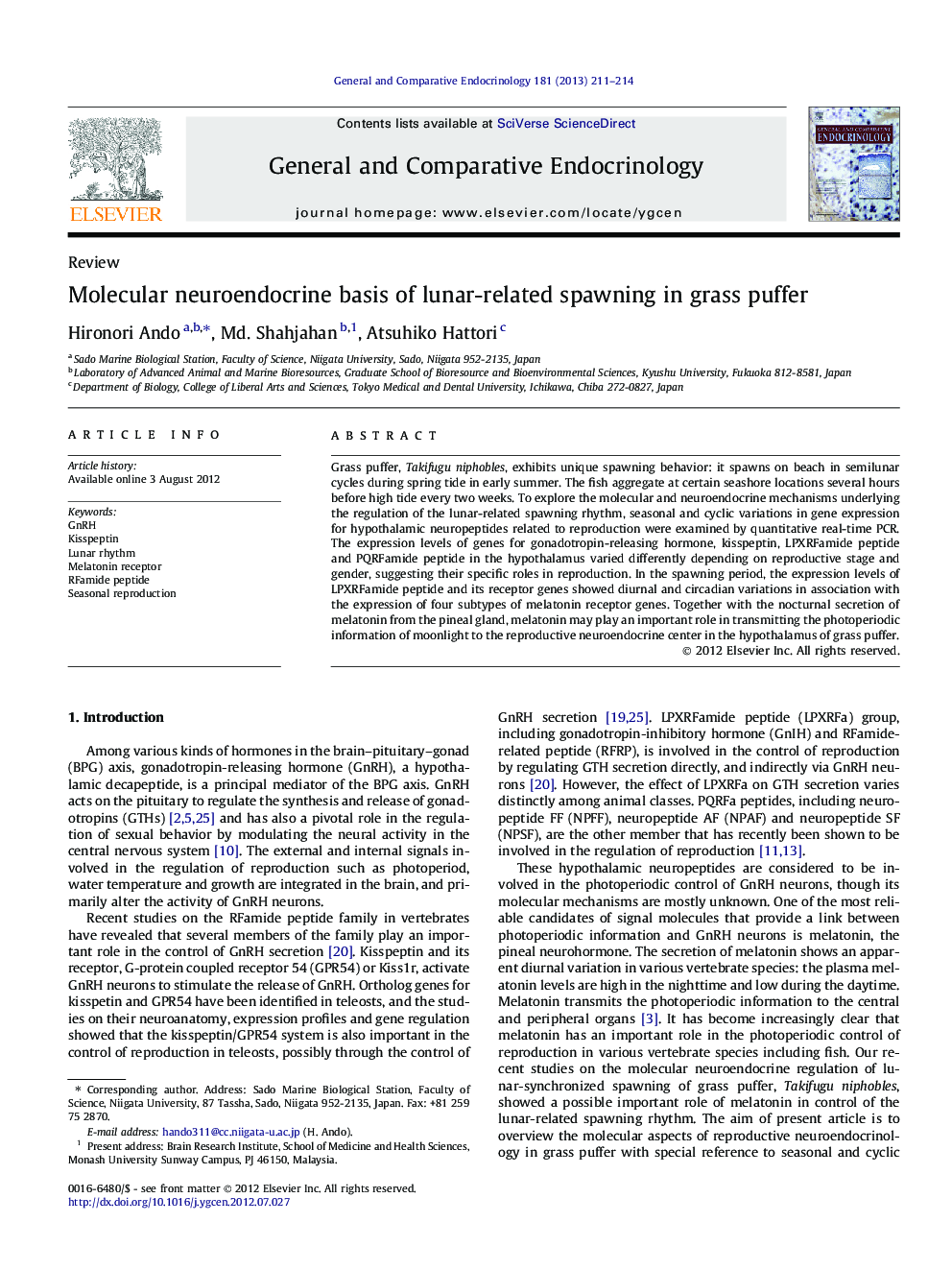| Article ID | Journal | Published Year | Pages | File Type |
|---|---|---|---|---|
| 2800419 | General and Comparative Endocrinology | 2013 | 4 Pages |
Grass puffer, Takifugu niphobles, exhibits unique spawning behavior: it spawns on beach in semilunar cycles during spring tide in early summer. The fish aggregate at certain seashore locations several hours before high tide every two weeks. To explore the molecular and neuroendocrine mechanisms underlying the regulation of the lunar-related spawning rhythm, seasonal and cyclic variations in gene expression for hypothalamic neuropeptides related to reproduction were examined by quantitative real-time PCR. The expression levels of genes for gonadotropin-releasing hormone, kisspeptin, LPXRFamide peptide and PQRFamide peptide in the hypothalamus varied differently depending on reproductive stage and gender, suggesting their specific roles in reproduction. In the spawning period, the expression levels of LPXRFamide peptide and its receptor genes showed diurnal and circadian variations in association with the expression of four subtypes of melatonin receptor genes. Together with the nocturnal secretion of melatonin from the pineal gland, melatonin may play an important role in transmitting the photoperiodic information of moonlight to the reproductive neuroendocrine center in the hypothalamus of grass puffer.
► The expression of neuropeptide genes is dependent on reproductive stage and gender. ► LPXRFa gene showed diurnal and circadian expressions in the diencephalon. ► Correlated expression of LPXRFa and melatonin receptor suggests control by melatonin. ► Grass puffer provides an excellent model for neuroendocrine control of reproduction.
